Теория струн и скрытые измерения Вселенной [заметки]
1
Plato, Timaeus, trans. Donald J. Zeyl (Indianapolis: Hackett, 2000), p. 12.
2
Так в книге. Правильно: «из двадцати треугольников» (прим. Vadi. Далее множество подобных «тупых» ошибок исправляю в тексте без примечаний)
3
Ibid., p. 46–47.
4
Ibid., p. 44.
5
Max Tegmark (MIT), interview with author, May 16, 2005. (Note: All interviews were conducted by Steve Nadis unless otherwise noted.)
6
Aristotle, On the Heavens, at Ancient Greek Online Library, http://greektexts.com/library/Aristotle/On_The_Heavens/eng/print/1043.html.
7
Michio Kaku. Hyperspace (New York: Anchor Books, 1995), p. 34.
8
H. G. Wells, The Time Machine (1898), available at http://www.bartleby.com/1000/1.html.
9
Abraham Pais, Subtle Is the Lord (New York: Oxford University Press, 1982), p. 152.
10
Oskar Klein, “From My Life of Physics,” in The Oskar Klein Memorial Lectures, ed. Gosta Ekspong (Singapore: World Scientific, 1991), p. 110.
11
Leonard Mlodinow, Euclid’s Window (New York: Simon & Schuster, 2002), p. 231.
12
Andrew Strominger, “Black Holes and the Fundamental Laws of Nature,” Lecture, Harvard University, Cambridge, MA, April 4, 2007.
13
Ibid.
14
Georg Friedrich Bernhard Riemann, “On the Hypotheses Which Lie at the Foundations of Geometry,” lecture, Gottingen Observatory, June 10, 1854.
15
E. T. Bell, Men of Mathematics (New York: Simon & Schuster, 1965), p. 21.
16
Leonard Mlodinow, Euclid's Window (New York: Simon & Schuster, 2002), p. xi.
17
Edna St. Vincent Millay, “Euclid Alone Has Looked on Beauty Bare,” quoted in Robert Osserman, Poetry of the Universe (New York: Anchor Books, 1995), p. 6.
18
Andre Nikolaevich Kolmogorov, Mathematics of the 19th Century (Birkhauser, 1998).
19
Deane Yang (Polytechnic Institute of New York University), e-mail letter to author, April 20, 2009.
20
Mlodinow, Euclid's Window, p. 205.
21
Brian Greene, The Elegant Universe (New York: Vintage Books, 2000), p. 231.
22
C. N. Yang. “Albert Einstein: Opportunity and Perception,” speech, 22nd International Conference on the History of Science, Beijing, China, 2005.
23
Chen Ning Yang, “Einstein’s Impact on Theoretical Physics in the 21st Century,” AAPPS Bulletin 15 (February 2005).
24
Greene, The Elegant Universe, p. 72.
25
Robert Greene (UCLA), interview with author, March 13, 2008.
26
Lizhen Ji and Kefeng Liu, “Shing-Tung Yau: A Manifold Man of Mathematics,” Proceedings of Geometric Analysis: Present and Future Conference, Harvard University, August 27-September 1, 2008.
27
Leon Simon (Stanford University), interview with author, February 6, 2008.
28
Greene, interview with author, March 13, 2008.
29
Cameron Gordon (University of Texas), interview with author, March 14, 2008.
30
Robert Geroch (University of Chicago), interview with author, February 28, 2008.
31
Edward Witten (Institute for Advanced Study), interview with author, March 31, 2008.
32
Edward Witten, “A New Proof of the Positive Energy Theorem,” Communications in Mathematical Physics 80 (1981): 381–402.
33
Roger Penrose, “Gravitational Collapse: The Role of General Relativity,” 1969, reprinted in Mathematical Intelligencer 30 (2008): 27–36.
34
Richard Schoen (Stanford University), interview with author, January 31, 2008.
35
Demetrios Christodoulou, The Formation of Black Holes in General Relativity (Zurich: European Mathematical Society, 2009).
36
John D. S. Jones, “Mysteries of Four Dimensions,” Nature 332 (April 7, 1998): 488–489.
37
Simon Donaldson (Imperial College), interview with author, April 3, 2008.
38
Faye Flam, “Getting Comfortable in Four Dimensions,” Science 266 (December 9, 1994): 1640.
39
Ibid.
40
Mathematical Institute at the University of Oxford, “Chart the Realm of the 4th Dimension,” http://www2.maths.ox.ac.uk/~dusautoy/2soft/4D.htm.
41
Grisha Perelman, “The Entropy Formula for the Ricci Flow and Its Geometric Applications,” November 11, 2002, http://arxiv.org/abs/math/0211159vl.
42
Eugenio Calabi (University of Pennsylvania), interview with author, October 18, 2007.
43
Robert Greene, interview with author, April 17, 2008.
44
Robert Greene, interview with author, June 24, 2008.
45
Eugenio Calabi, interview with author, October 18, 2007.
46
Robert Greene (UCLA), interview with author, January 29, 2008.
47
Eugenio Calabi (University of Pennsylvania), interview with author, May 14, 2008.
48
Ibid.
49
Erwin Lutwak (Polytechnic Institute of NYU), interview with author, May 15, 2008.
50
Calabi, interview, May 14, 2008.
51
Eugenio Calabi, interview with author, June 16, 2008.
52
Ibid.
53
Eugenio Calabi, interview with author, October 18, 2007.
54
Cumrun Vafa (Harvard University), interview with author, January 19,2007.
55
John Schwarz (California Institute of Technology), interview with author, August 13, 2008.
56
Michael Green (University of Cambridge), e-mail letter to author, August 15, 2008.
57
John Schwarz, interview with author, August 13, 2008.
58
Andrew Strominger (Harvard University), interview with author, February 7, 2007.
59
Andrew Strominger, interview with author, November 1, 2007.
60
Raman Sundrum (Johns Hopkins University), interview with author, January 25,2007.
61
Andrew Strominger, interview with author, February 7, 2007.
62
Dennis Overbye, “One Cosmic Question, Too Many Answers,” New York Times, September 2, 2003.
63
Juan Maldacena (Princeton University), interview with author, September 9, 2007.
64
Dan Freed (University of Texas), interview with author, June 24, 2008.
65
Tristan Hubsch (Howard University), interview with author, August 30, 2008.
66
Gary Horowitz (University of California, Santa Barbara), interview with author, February 15, 2007.
67
Eugenio Calabi (University of Pennsylvania), interview with author, October 18, 2007.
68
Woody Allen, “Strung Out,” New Yorker, July 28, 2003.
69
Liam McAllister (Cornell University), e-mail letter to author, April 24, 2009.
70
Allan Adams (MIT), interview with author, August 10, 2007.
71
Joe Polchinski (University of California, Santa Barbara), interview with author, January 29, 2007.
72
Brian Greene, The Fabric of the Cosmos (New York: Alfred A. Knopf, 2004), p. 372.
73
P. Candelas, G. Horowitz, A. Strominger, and E. Witten, “Vacuum Configurations for Superstrings,” Nuclear Physics В 258 (1985): 46–74.
74
Edward Witten (IAS), e-mail letter to author, July 24, 2008.
75
Volker Braun, Philip Candelas, and Rhys Davies, “A Three-Generation Calabi-Yau Manifold with Small Hodge Numbers,” October 28, 2009, http://arxiv.org/PS_cache/arxiv/pdf/0910/0910.5464vl.pdf.
76
Dennis Overbye, “One Cosmic Question, Too Many Answers,” New York Times, September 2, 2003.
77
Dale Glabach and Juan Maldacena, “Who’s Counting?” Astronomy, May 2006, p. 72.
78
Andrew Strominger, “String Theory, Black Holes, and the Fundamental Laws of Nature,” lecture, Harvard University, Cambridge, Mass., April 4, 2007.
79
Edward Witten (IAS), e-mail letter to author, July 21, 2008.
80
Petr Horava (University of California, Berkeley), interview with author, July 6, 2007.
81
Ibid.
82
Аллюзия на цитату из поэмы Томаса Стернза Элиота «Полые люди»: «Не взрыв, но всхлип». — Примеч. перев.
83
Ronen Plesser (Duke University), interview with author, September 3, 2008.
84
Ibid.
85
Marcus Grisaru (McGill University), interview with author, August 18, 2008.
86
Plesser, interview with author, September 3, 2008.
87
Shamit Kachru (Stanford University), interview with author, August 19, 2008.
88
Ashoke Sen (Harish-Chandra Research Institute), interview with author, August 22, 2008.
89
Jacques Distler and Brian Greene, “Some Exact Results on the Superpotential from Calabi-Yau Compactifications,” Nuclear Physics В 309 (1988): 295–316.
90
Doron Gepner, “Yukawa Couplings for Calabi-Yau String Compactification,” Nuclear Physics В 311 (1988): 191–204.
91
Kachru, interview with author, August 19, 2008.
92
Paul Aspinwall (Duke University), interview with author, August 14, 2008.
93
Wolfgang Lerche, Cumrun Vafa, and Nicholas Warner, “Chiral Rings in N=2 Superconformal Theories,” Nuclear Physics В 324 (1989): 427–474.
94
В. R. Greene, C. Vafa, N. P. Warner, “Calabi-Yau Manifolds and Renormalization Group Flows,” Nuclear Physics В 324 (1989): 371–390.
95
Brian Greene (Columbia University), interview with author, March 11,2010.
96
Ibid.
97
Doron Gepner, interview with author, August 19, 2008.
98
B. R. Greene and M. R. Plesser, “Duality in Calabi-Yau Moduli Space,” Nuclear Physics В 338 (1990): 15–37.
99
Brian Greene, The Elegant Universe (New York: Vintage Books, 2000), p. 258.
100
Plesser, interview with author, September 19, 2008.
101
Greene, interview with author, March 11, 2010.
102
Greene, The Elegant Universe, p. 259.
103
Cumrun Vafa (Harvard University), interview with author, September 19, 2008.
104
Greene, interview with author, March 13, 2010.
105
Mark Gross (UCSD), interview with author, October 31, 2008.
106
Andreas Gathmann (University of Kaiserslautern), interview with author, August 25, 2008.
107
David Hilbert, “Mathematical Problems,” lecture, International Congress of Mathematicians, Paris, 1900, http://alephO.clarku.edu/~djoyce/hilbert/problems.html (html version prepared by David Joyce, Mathematics Department, Clark University, Worcester, Mass.).
108
Andreas Gathmann, “Mirror Principle I,” Mathematical Reviews, MR1621573, 1999.
109
David Cox (Amherst College), interview with author, June 13, 2008.
110
Andrew Strominger (Harvard University), interview with author, February 7, 2007.
111
Gross, interview with author, September 19, 2008.
112
Ibid.
113
Gross, interview with author, September 24, 2008.
114
Eric Zaslow (Northwestern University), interview with author, June 26, 2008.
115
Gross, interview with author, September 24, 2008.
116
Mark Gross, e-mail letter to author, September 29, 2008.
117
Strominger, interview with author, August 1, 2007.
118
Zaslow, interview with author, June 26, 2008.
119
Gross, interview with author, September 19, 2008.
120
Yan Soibelman (Kansas State University), interview with author, September 26, 2008.
121
Aspinwall, interview with author, June 23, 2008.
122
Michael Douglas (Stony Brook University), interview with author, August 20, 2008.
123
Aspinwall, interview with author, June 23, 2008.
124
Gross, interview with author, September 24, 2008.
125
Avi Loeb (Harvard University), interview with author, September 25,2008.
126
American Mathematical Society, “Interview with Heisuke Hironaka,” Notices of the AMS 52, no. 9 (October 2005): 1,015.
127
Steve Nadis, “Cosmic Inflation Comes of Age,” Astronomy (April 2002).
128
Andrew Strominger, “String Theory, Black Holes, and the Fundamental Laws of Nature,” lecture, Harvard University, Cambridge, Mass., April 4, 2007.
129
Ibid.
130
Hirosi Ooguri (California Institute of Technology), interview with author, October 8, 2008.
131
Strominger, lecture.
132
Andrew Strominger and Cumrun Vafa, “Microscopic Origin of the Bekenstein-Hawking Entropy,” Physics Letters В 379 (June 27, 1996): 99-104.
133
Andrew Strominger, quoted in Gary Taubes, “Black Holes and Beyond,” Science Watch, May/June 1999, http://archive.sciencewatch.com/may-june99/sw_may-june99_page3.htm.
134
Hirosi Ooguri, interview with author, October 8, 2008.
135
Strominger, quoted in Taubes, “Black Holes and Beyond.”
136
Xi Yin (Harvard University), interview with author, October 14, 2008.
137
Ibid.
138
Xi Yin, interview with author, October 22, 2008.
139
Frederik Denef (Harvard University), interview with author, August 26, 2008.
140
Xi Yin, interview with author, October 14, 2008.
141
Aaron Simons, interview with author, February 9, 2007.
142
Ibid.
143
J. M. Maldacena, A. Strominger, and E. Witten, “Black Hole Entropy in M-Theory” Journal of High Energy Physics 9712 (1997), http://arxiv.org/PS_cache/hepth/pdf/9711/9711053vl.pdf.
144
Juan Maldacena (IAS), interview with author, September 4, 2008.
145
Hirosi Ooguri, Andrew Strominger, and Cumrun Vafa, “Black Hole Attractors and the Topological String,” Physical Review D 70 (2004).
146
Cumrun Vafa (Harvard University), interviewwith author, September 26, 2008.
147
James Sparks (Harvard University), interview with author, February 6, 2007.
148
Amanda Gefter, “The Elephant and the Event Horizon,” New Scientist (October 26,2006): 36–39.
149
John Preskill, “On Hawking’s Concession,” July 24, 2004, http://www.theory.caltech.edu/~preskill/jp_24jul04.html.
150
Andrew Strominger (Harvard University), interview with author, February 7, 2007.
151
Juan Maldacena, “The Illusion of Gravity,” Scientific American, November 2005, pp. 57–58, 61.
152
Davide Castelvecchi, “Shadow World,” Science News 172 (November 17,2007).
153
Taubes, “Black Holes and Beyond.”
154
L. Frank Baum, The Wizard of Oz (Whitefish, Mont.: Kessinger, 2004), p. 111.
155
Volker Braun (Dublin Institute for Advanced Studies), interview with author, November 4, 2008.
156
Philip Candelas (Oxford University), interview with author, December 1, 2008.
157
Ibid.
158
Andrew Strominger (Harvard University), interview with author, February 7, 2007.
159
Cumrun Vafa, “The Geometry of Grand Unified Theories,” lecture, Harvard University, Cambridge, Mass., August 29, 2008.
160
Chris Beasley (Stony Brook University), interview with author, November 13, 2008.
161
Burt Оvrut (University of Pennsylvania), interview with author, July 20, 2008.
162
Ovrut, interview with author, February 2, 2007.
163
Ron Donagi (University of Pennsylvania), interview with author, November 14, 2008.
164
Donagi, interview with author, November 19, 2008.
165
Candelas, interview with author, December 1, 2008.
166
Donagi, interview with author, May 3, 2008
167
Ovrut, interview with author, November 20, 2008.
168
Donagi, interview with author, November 20, 2008.
169
Ovrut, interview with author, November 20, 2008.
170
Shamit Kachru (Stanford University), interview with author, November 4, 2008.
171
Michael Douglas (Stony Brook University), interview with author, August 20, 2008.
172
Candelas, interview with author, December 1, 2008.
173
Simon Donaldson (Imperial College), interview with author, November 29, 2008.
174
Ovrut, interview with author, November 19, 2008.
175
Candelas, interview with author, December 1, 2008.
176
Strominger, interview with author, February 7, 2007.
177
Adrian Cho, “String Theory Gets Real — Sort Of,” Science 306 (November 26, 2004): 1,461.
178
Candelas, interview with author, December 1, 2008.
179
Allan Adams (MIT), interview with author, November 15, 2008.
180
Gary Shiu, quoted in Adrian Cho, “String Theory Gets Real — Sort Of” Science 306 (November 26, 2004): 1,461.
181
Shamit Kachru (Stanford University), e-mail letter to author, December 6, 2008.
182
Shamit Kachru, Renata Kallosh, Andrei Linde, and Sandip Trivedi, “De Sitter Vacua in String Theory,” Physical Review D 68 (2003).
183
Raman Sundrum (Johns Hopkins University), interview with author, February 22, 2007.
184
Liam McAllister (Cornell University), interview with author, November 12, 2008.
185
Kachru, interview with author, September 8, 2007.
186
Liam McAllister (Princeton University), interview with author, February 20, 2007.
187
Joe Polchinski (University of California, Santa Barbara), interview with author, February 6, 2006.
188
David Gross, quoted in Dennis Overbye, “Zillions of Universes? Or Did Ours Get Lucky?” New York Times, October 28, 2003.
189
Burton Richter, “Randall and Susskind,” letter to editor, New York Times, January 29, 2006.
190
Leonard Susskind, The Cosmic Landscape (New York: Little Brown, 2006), pp. 354–355.
191
Tristan Hubsch (Howard University), interview with author, November 7, 2008.
192
Mark Gross (Stanford University), interview with author, October 31, 2008.
193
Gross, interview with author, September 19, 2008.
194
Miles Reid (University of Warwick), interview with author, August 12, 2007.
195
Allan Adams (MIT), interview with author, October 31, 2008.
196
Gross, interview with author, October 31, 2008.
197
Adams, interview with author, October 31, 2008.
198
Tristan Hubsch, e-mail letter to author, December 15, 2008.
199
Melanie Becker (Texas A&M University), interview with author, February 1, 2007.
200
Andrew Strominger (Harvard University), interview with author, February 7, 2007.
201
Li-Sheng Tseng (Harvard University), interview with author, December 17, 2008.
202
Becker, interview with author, February 1, 2007.
203
Polchinski, interview with author, January 29, 2007.
204
Strominger, interview with author, August 1, 2007.
205
Burt Ovrut (University of Pennsylvania), interview with author, February 2, 2007.
206
Geoffrey Landis, “Vacuum States,” Asimov's Science Fiction 12 (July 1988): 73–79.
207
Andrew R. Frey, Matthew Lippert, and Brook Williams, “The Fall of Stringy de Sitter,” Physical Review D. 68 (2003).
208
Sidney Coleman, “Fate of the False Vacuum: Semi-classical Theory,” Physical Review D. 15 (May 15, 1977): 2,929-2,936.
209
Steve Giddings (University of California, Santa Barbara), interview with author, September 24, 2007.
210
Matthew Kleban (New York University), interview with author, January 17, 2008.
211
Dennis Overbye, “One Cosmic Question, Too Many Answers,” New York Times, September 2, 2003.
212
Andrei Linde (Stanford University), interview with author, December 27, 2007.
213
Giddings, interview with author, October 17, 2007.
214
Shamit Kachru (Stanford University), interview with author, September 18, 2007.
215
Linde, interview with author, December 27, 2007.
216
Henry Tye (Cornell University), interview with author, September 12, 2007.
217
Linde, interview with author, January 10, 2008.
218
S. W. Hawking, “The Cosmological Constant,” Philosophical Transactions of the Royal Society A. 310 (1983): 303–310.
219
Kleban, interview with author, January 17, 2008.
220
Steven B. Giddings, “The Fate of Four Dimensions,” Physical Review D. 68 (2003).
221
Geoffrey Landis, “Vacuum States,” Asimov's Science Fiction 12 (July 1988): 73–79.
222
Andrew R. Frey, Matthew Lippert, and Brook Williams, “The Fall of Stringy de Sitter,” Physical Review D. 68(2003).
223
Sidney Coleman, “Fate of the False Vacuum: Semi-classical Theory,” Physical Review D. 15 (May 15, 1977): 2,929-2,936.
224
Steve Giddings (University of California, Santa Barbara), interview with author, September 24, 2007.
225
Matthew Kleban (New York University), interview with author, January 17, 2008.
226
Dennis Overbye, “One Cosmic Question, Too Many Answers,” New York Times, September 2, 2003.
227
Andrei Linde (Stanford University), interview with author, December 27, 2007.
228
Giddings, interview with author, October 17, 2007.
229
Shamit Kachru (Stanford University), interview with author, September 18, 2007.
230
Linde, interview with author, December 27, 2007.
231
Henry Tye (Cornell University), interview with author, September 12, 2007.
232
Linde, interview with author, January 10,2008.
233
S. W. Hawking, “The Cosmological Constant,” Philosophical Transactions of the Royal Society A. 310 (1983): 303–310.
234
Kleban, interview with author, January 17, 2008.
235
Steven B. Giddings, “The Fate of Four Dimensions,” Physical Review D. 68 (2003).
236
Текст этого и последующих комментариев до конца Главы 12 отсутствует в издании. Похоже, что и комментарии с начала этой главы неверны (прим. Vadi)
237
То же.
238
То же.
239
То же.
240
То же.
241
То же.
242
То же.
243
То же.
244
То же.
245
То же.
246
То же.
247
То же.
248
То же.
249
То же.
250
То же.
251
Peter Goddard, ed., Paul Dirac: The Man and His Work (New York: Cambridge University Press, 1998).
252
Eugene Wigner, “The Unreasonable Effectiveness of Mathematics in the Natural Sciences,” Communications in Pure and Applied Mathematics 13 (February 1960).
253
Chen Ning Yang, S. S. Chem: A Great Geometer of the 20th Century (Boston: International Press, 1998), p. 66.
254
Robert Osserman, Poetry of the Universe (New York: Anchor Books, 1996), pp. 142–143.
255
Richard P. Feynman, The Character of Physical Law (New York: Modern Library, 1994), p. 50.
256
Michael Atiyah, quoted in Patricia Schwarz, “Sir Michael Atiyah on Math, Physics and Fun,” The Official String Theory Web site, http://www.superstringtheory.com/people/atiyah.html.
257
Jim Holt, “Unstrung,” New Yorker, October 2, 2006, p. 86.
258
Michael Atiyah, “Pulling the Strings,” Nature 438 (December 22–29, 2005): 1,081.
259
Robert Mills, “Beauty and Truth,” in Chen Ning Yang: A Great Physicist of the 20th Century, ed. Shing-Tung Yau and C. S. Liu (Boston: International Press, 1995), p. 199.
260
Henry Tye (Cornell University), e-mail letter to author, December 19, 2008.
261
Brian Greene, interview by Ira Flatow, “Big Questions in Cosmology,” Science Friday, NPR, April 3, 2009.
262
К. C. Cole, “A Theory of Everything,” New York Times Magazine, October 18, 1987.
263
Nicolai Reshetikhin (University of California, Berkeley), interview with author, June 5, 2008.
264
Robbert Dijkgraaf (University of Amsterdam), interview with author, February 8, 2007.
265
Brian Greene, The Elegant Universe (New York: Vintage Books, 2000), p. 210.
266
Andrew Strominger (Harvard University), interview with author, August 1, 2007.
267
S. Ramanujan, “On Certain Arithmetic Functions,” Transactions of the Cambridge Philosophical Society 22 (1916): 159–184.
268
Lothar Goettsche, “A Conjectural Generating Function for Numbers of Curves on Surfaces,” November II, 1997, arXiv.org, Cornell University archives, http://arxiv.org/PS_cache/alg-geom/pdf/9711/9711012vl.pdf.
269
Ai-Ko Liu, “Family Blowup Formula, Admissible Graphs and the Enumeration of Singular Curves, I,” Journal of Differential Geometry 56 (2000): 381–579.
270
Bong Lian (Brandeis University), interview with author, December 12, 2007.
271
Michael Atiyah, “Pulling the Strings,” Nature 438 (December 22–29, 2005): 1,082.
272
Glennda Chui, “Wisecracks Fly When Brian Greene and Lawrence Krauss Tangle Over String Theory,” Symmetry 4 (May 2007): 17–21.
273
Sean Carroll, “String Theory: Not Dead Yet,” Cosmic Variance blog, Discover online magazine, May 24,2007, http://cosmicvariance.com.
274
Edward Witten, quoted in К. C. Cole, “A Theory of Everything,” New York Times Magazine, October 18, 1987.
275
Ibid.
276
Alan Guth (MIT), interview with author, September 13, 2007.
277
Brian Greene, The Elegant Universe (New York: Vintage Books, 2000), p. 261.
278
Max Tegmark (MIT), interview with author, October 23, 2007.
279
Faye Flam, “Getting Comfortable in Four Dimensions,” Science 266 (December 9, 1994): 1, 640.
280
Cumrun Vafa (Harvard University), interview with author, January 19, 2007.
281
Robbert Dijkgraaf (University of Amsterdam), interview with author, February 8, 2007.
282
David Morrison (University of California, Santa Barbara), interview with author, May 27, 2008.
283
Allan Adams (MIT), interview with author, May 23, 2008.
284
Joe Polchinski (University of California, Santa Barbara), interview with author, August 31, 2007.
285
Edward Witten (Institute for Advanced Study), e-mail letter to author, January 30, 2007.
286
Adams, interview with author, May 23, 2008.
287
Turnbull WWW Server, “Quotations by Gauss,” School of Mathematical Sciences, University of St. Andrews, St. Andrews, Fife, Scotland, February 2006, http://wwwgroups.dcs.st-and.ac.uk/-history/Quotations/Gauss.html.
288
Ibid.
289
Brian Greene, “String Theory on Calabi-Yau Manifolds,” lectures given at Theoretical Advanced Study Institute, 1996 session (TASI-96), Boulder, June 1996.
290
К. C. Cole, “Time, Space Obsolete in New View of Universe,” Los Angeles Times, November 16, 1999.
291
Andrew Strominger (Harvard University), interview with author, August 1, 2007.
292
Morrison, interview with author, May 29, 2008.
293
Brian Greene, Elegant Universe (New York: Vintage Books, 2000), pp. 268, 273.
294
Paul Aspinwall (Duke University), interview with author, June 6, 2008.
295
Morrison, interview with author, May 27, 2008.
296
Andrew Strominger (Harvard University), February 7, 2007.
297
Chris Beasley, Jonathan Heckman, and Cumrun Vafa, “GUTs and Exceptional Branes in F-Theory — I,” November 18, 2008, http://arxiv.org/abs/0802.3391; Chris Beasley, Jonathan Heckman, and Cumrun Vafa, “GUTs and Exceptional Branes in F-Theory — II: Experimental Predictions,” June 12, 2008, http://arxiv.org/abs/arxiv:0806.0102; Ron Donagi and Martijn Wijnholt, “Model Building with F-Theory,” March 3, 2008, http://lanl.arxiv.org/pdf/0802.2969v2; and Ron Donagi and Martijn Wijnholt, “Breaking GUT Groups in F-Theory,” August 17, 2008, http://lanl.arxiv,org/pdf/0808.2223vl.
298
Strominger, interview with author, July 23, 2007.
299
Cumrun Vafa (Harvard University), interview with author, November 2, 2007.
300
Leonard Mlodinow, Euclid's Mirror (New York: Simon & Schuster, 2002), p. 255.
301
Edward Witten (Institute for Advanced Study), e-mail letter to author, February 12, 2007.
302
David Morrison (University of California, Santa Barbara), interview with author, May 27, 2008.
303
Ravi Vakil (Stanford University), interview with author, May 28, 2008.
304
Strominger, interview with author, August 1, 2007.
305
Piers Bursill-Hall, “Why Do We Study Geometry? Answers Through the Ages,” lecture, Faulkes Institute for Geometry, University of Cambridge, May 1, 2002.
306
Donald Zeyl (University of Rhode Island), interview with author, October 18, 2007.
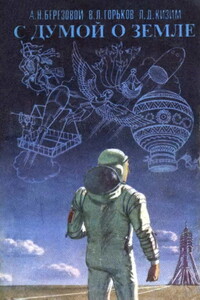
Дело, начатое Сергеем Павловичем Королевым и Юрием Алексеевичем Гагариным, их соратниками, живет и ширится. Эта мысль красной нитью проходит через страницы этой книги. Она содержит три раздела, которые объединяет общий замысел — показ советской космонавтики с позиций того участка, где довелось трудиться авторам. Это размышления о жизни и работе в космосе, повествование о технике обеспечения космических полетов, об экспериментах в космосе, о взаимосвязи космонавтики с различными областями деятельности людей, об истории и месте космонавтики в нашей земной жизни. Книга рассчитана на широкий круг читателей.
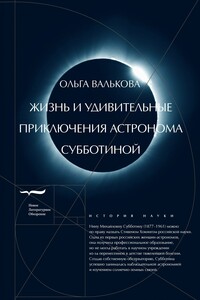
Нину Михайловну Субботину (1877–1961) можно по праву назвать Стивеном Хокингом российской науки. Одна из первых российских женщин-астрономов, она получила профессиональное образование, но не могла работать в научном учреждении из-за тяжелой болезни, перенесенной в детстве. Создав собственную обсерваторию, Субботина успешно занималась наблюдательной астрономией и изучением солнечно-земных связей. Данные ее наблюдений регулярно публиковались в самых престижных международных астрономических журналах. Но круг ее интересов был значительно шире.
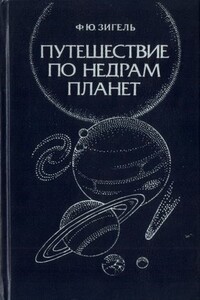
В увлекательной форме рассказано о первых успехах нового направления в науке — сравнительной планетологии. Читатель узнает о новейших достижениях геофизики в изучении недр планеты и спутников, космических связях геофизики, роли гравиметрии в определении фигуры Земли, предсказаниях землетрясений, вулканических процессах на планетах. Значительное место уделено проблемам происхождения Солнечной системы и планет, использованию их недр для технических нужд человечества.
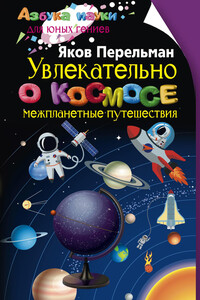
В книге знаменитого учителя и ученого Я.И. Перельмана вы найдете массу тайн и загадок, познакомиться с которыми будет интересно любому! Строение Солнечной системы, объяснение тех или иных природных явлений, достижения «космической» науки и многое другое. После прочтения этой увлекательной книги вы не только познакомитесь с основами астрономии и узнаете, что таит в себе загадочный мир космоса, но и сумеете развить свое воображение и расширить кругозор.
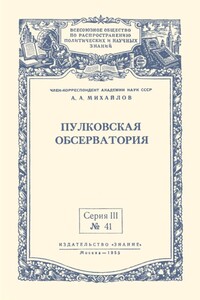
В книге рассказывается история главного героя, который сталкивается с различными проблемами и препятствиями на протяжении всего своего путешествия. По пути он встречает множество второстепенных персонажей, которые играют важные роли в истории. Благодаря опыту главного героя книга исследует такие темы, как любовь, потеря, надежда и стойкость. По мере того, как главный герой преодолевает свои трудности, он усваивает ценные уроки жизни и растет как личность.
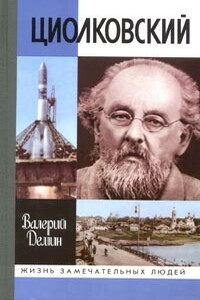
Новая биография Константина Эдуардовича Циолковского (1857-1935), написанная доктором философских наук В.Н.Деминым, кардинально отличается ото всех предыдущих. Основоположник отечественной и мировой космонавтики представлен здесь не только как гениальный ученый и изобретатель, но и как выдающийся философ-космист, определивший мировоззренческий и методологический вектор развития науки и философии на многие десятилетия вперед. Это история духа, исканий, сомнений, ошеломляющих взлетов и трагических разочарований человека, ставшего олицетворением науки XX века.
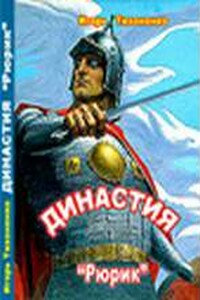
Исторический триллер.Россия в 9 веке разбита на мелкие княжества, которые враждуют между собой.Князю Гостомыслу предсказывают, что он пригласит править к себе в Новгород — врага своего. Кто он? Сбудутся ли предсказания?А пока русскую землю раздирают на части, то норманны, то варяги. Пришло время выбрать одного правителя на Руси. Местный князь Вадим и его жена (колдунья) — тоже имеют амбициозные планы. И они хотят силой завоевать все славянские княжества. Приходится Гостомыслу просить помощи у своего внука — финского принца Рюрика.
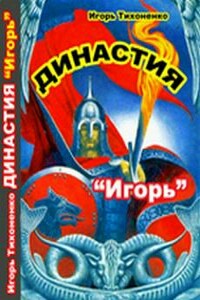
Исторический триллер.Сейчас уже мало кто верит в колдовство и сверхъестественные силы. И уж, конечно, мало найдётся людей, которые знают, что такое честь и рыцарское достоинство. А в девятом веке новой эры эти понятия были, почти обыденными.В этой книге рассказывается о том, как в седой древности русские князья Игорь и Олег создавали новое государство Киевскую Русь. Преодолев огонь сражений, колдовские силы и коварство врагов, они добились своего, и заветная мечта отца князя Игоря Рюрика воплотилась в жизнь.